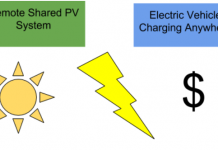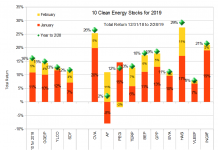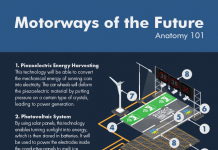John Petersen
On Monday of this week the Electrification Coalition, a newly organized industrial lobby that styles itself as a “nonpartisan, not-for-profit group of business leaders committed to promoting policies and actions that facilitate the deployment of electric vehicles on a mass scale in order to combat the economic, environmental, and national security dangers caused by our nation’s dependence on petroleum” released a 170 page policy paper titled, “Electrification Roadmap, Revolutionizing Transportation and Achieving Energy Security.” Like most industrial lobbies jostling for position at the Federal trough, the coalition’s core membership includes a baker’s dozen of top executives from AeroVironment (AVAV), NRG Energy (NRG), Nissan (NSANY), Johnson Controls (JCI), FedEx (FDX) and A123 Systems (AONE), along with several lesser known private companies. Their basic pitch is that the economic, technical and practical challenges associated with a transition to PHEVs and EVs, which the cognoscenti will hereafter refer to as “grid enabled vehicles,” or “GEVs,” are insurmountable in a free market economy. Quoting from the preface:
“Ideally, the technology and deployment of electric vehicles would emerge through regular market mechanisms. Events conclusively demonstrate that this path to electrification is unlikely, however. Therefore, if the desired transformation is to occur anytime in the foreseeable future, focused and sustained public policy will be required.”
In less florid terms, GEVs won’t be an affordable transportation alternative in the foreseeable future and the only way to overcome the abysmal economics of electric transportation is to hide part of the costs in the utility rate base, provide lavish subsidies for GEV manufacturers, increase tax credits for GEV purchasers and concentrate command and control on the banks of the Potomac where all wisdom resides and all power truly belongs. I’m still having a bit of trouble with the idea that American consumers can’t afford a GEV future while American taxpayers and utility customers can, but I guess some sophisticated economic concepts are just above my pay grade. The good news is that implementing the Electrification Roadmap should be less costly than Obamacare. The rest is less encouraging; particularly for ordinary folks who think that investments should turn a profit from sales of competitive products.
The core problem we all want to solve is oil prices, which hit an inflection point in the late ’90s and show no signs of deviating from their new trend. To help readers visualize the problem I’ve created a simple graph from historical statistics published by the Energy Information Administration and then added a price channel overlay in blue. While there are any number of opinions about the future of oil prices, history clearly shows that severe price spikes lead to recessions that lead in turn to equally severe price troughs. Over the long term the only prediction I feel comfortable making is that oil prices will probably bounce around in the price channel until we hit another inflection point. The only certainty is that each of us will be forced to choose between suffering the pain of increasing oil prices or taking individual responsibility for our choices and changing our behavior as consumers.

I believe America should do everything in its power to escape the fiscal tyranny of imported oil and minimize the obscene indirect costs of protecting tenuous supply chains in a dangerous world. I do not believe, however, that a rapid transition to GEVs is either possible or desirable. There is only one commercially available GEV on the market today. While several manufacturers plan to introduce GEVs beginning in 2010, their forecasts and performance claims are based on computer models, estimates and laboratory testing instead of real-world experience. Can you imagine the outrage if somebody tried to pull that kind of crap with a new drug? It took ten years for the venerable Toyota Prius to build a reputation for reliability and earn consumer trust and loyalty. The idea that a radically new product class that costs twice as much and offers far less flexibility can or should be forced into the market ignores human needs and is, by definition, irrational.
The roadmap begins with a lengthy discussion about the cost effectiveness and relative cleanliness of electricity as an energy source for transportation. It also mentions in passing that batteries are not sources of energy, but devices that store energy. In a conventional car the energy storage system costs about $5 per gallon of fuel tank capacity and the energy costs about $0.10 per mile. In a GEV the energy only costs $0.02 per mile but the energy storage system will cost over $4,500 per equivalent gallon of capacity even if widely promised and incredibly vague economies of scale materialize. Ultimately the trade-off is operating costs vs. capital costs. By the coalition’s reckoning, the unsubsidized cash-on-cash breakeven point for a new GEV will be 10 to 12 years. If you include Federal tax credits in the calculations, the breakeven point is pushed forward into the 5 to 8 year range. Those payback periods may appeal to the philosophically committed or the mathematically challenged, but they will be non-starters for budget conscious consumers.
Like people, lithium-ion batteries work best in climate-controlled spaces. The bulk of our experience as battery users comes from consumer electronics we use in our homes, offices and cars. The limited experience most of us have with using batteries in extreme heat or cold is generally bad. I’m the first to acknowledge that GEVs may perform well in the friendly climates of San Diego and Honolulu, but their performance on frigid winter days in Chicago and torrid summer days in Phoenix will leave much to be desired. While the roadmap doesn’t delve into the impact of terrain, I’ve spent enough time pedaling my bicycle uphill to know that the eco-optimists in San Francisco will be less than enchanted with GEV performance in their fair city. The inescapable truth is that by the time you eliminate places that are too cold, too hot, too hilly or simply too sprawling, GEVs will be little more than niche products in the U.S., even with unlimited governmental support. GEVs may make some sense in Europe and Asia where daily drives are shorter, public transport is better, gasoline taxes are three to ten times higher and socialism is politically correct, but even then I have grave reservations.
One of the more startling aspects of the roadmap is its frank discussion of charging infrastructure requirements and costs, a subject that I’ve completely overlooked in earlier articles. Initially, the coalition believes two public charging stations will be required for every new GEV. For Level II (220 volt) charging stations, the costs will typically be in the $6,000 to $10,000 per vehicle range. When the capital cost for public charging stations is viewed as part and parcel of the aggregate GEV investment, the dismal economics only get worse. While I’ve suspected as much for a long time, the
roadmap also makes it clear that persistent happy talk about Level III quick charge stations (30 kW to 250 kW) is meaningless because first generation GEVs will be designed to accept a 220 volt charge at less than 30 Amps and it doesn’t take an engineer to know that something expensive will turn to slag the minute you plug a 6.6 kW battery pack into a 30 kW charging circuit.
Batteries are commodities, as are all of the raw materials that are used to make the batteries, motors and other components required for a GEV. The roadmap assumes away critical issues of raw materials availability by proving that the elements exist in nature and then ignoring fundamental natural resource development issues like location, economics, environmental impacts and the difference between known mineral resources and developed mineral reserves. It also assumes that recycling issues will resolve themselves despite the fact that the only class of ARRA battery manufacturing grants that went begging was battery recycling.
In How PHEVs and EVs Will Sabotage America’s Drive For Energy Independence I showed that until batteries are dirt cheap and available in unlimited quantities, basic Prius class HEVs are more efficient users of available battery capacity than GEVs. In PHEVs and EVs; Plugging Into a Lump of Coal, I showed that the same dynamic applies to CO2 emissions. In both cases, the unpalatable but undeniable truth arises from the law of diminishing returns. A Prius class HEV uses about 1.3 kWh of battery capacity to reduce both fuel consumption and C02 emissions by 40%. GEVs will use 10x to 20x the battery capacity to reduce fuel consumption and C02 emissions by about 65%. When you consider that every GEV that rolls off an assembly line will preclude the production of 10 to 20 Prius class HEVs, there is simply no contest in terms of either fuel consumption or C02 emissions.
The first 40% is low hanging fruit that can be harvested with 1.3 kWh of battery capacity per vehicle. That last 25% is a technical nightmare that cannot be solved without an unconscionable waste of natural resources. In a world where six billion people want a small piece of the lifestyle that 500 million of us have and take for granted, I’m appalled by the arrogance. What ever happened to the concepts of personal responsibility and shame?
Real albeit modest vehicle electrification solutions are already being implemented by a variety of companies in the energy storage and automotive sectors. These simple and cost effective baby steps are nowhere near as exciting as the quantum leaps envisioned by the Electrification Coalition, but at least they don’t expect Peter to pay for Paul’s eco-bling.
In a market economy companies thrive by selling reliable products that satisfy human needs at competitive prices. Businesses that feel compelled to hire lobbyists to argue that their business models can’t work in the absence of massive governmental intervention are doomed from the start (think grain ethanol). I may be an optimist, but even I understand that sometimes a 170-page pile of manure is not hiding a pony.
DISCLOSURE: None.









John,
You said (perhaps somewhat sarcastically)”I’m still having a bit of trouble with the idea that American consumers can’t afford a GEV future while American taxpayers and utility customers can.”
The economic justification for this type of thinking is that the benefits to society from PHEVs (ability to smooth demand and production from renewables, less dependence on foreign oil, potentially lower GHG emissions) exceed the benefits to the individual (fuel savings, the warm fuzzy feeling of doing something good for the environment, the “real option” of a plug I’ve discussed earlier.)
The question then becomes, do the societal benefits justify the societal investment? I don’t think so, and I don’t think you do either.
I think the money could be better spent on mass transit, producing more societal benefits. Nevertheless, there is a strong economic case for some taxpayer subsidy, just not enough to make GEVs viable on a large scale.
Tom, the ability to smooth renewables is great in theory but falls on its face in practice because if you have a GEV-40 parked at your job and you need range of 20 miles to get home for dinner, there is no way in the world you’re going to let the local utility deplete your batteries between 4 and 6 p.m. when they have the greatest need and those needs are in direct conflict with your needs
I’m also not thrilled that my 80-year old mother who can’t drive will pay higher electric rates so that somebody else can plug in his GEV at the mall.
While there are economic systems that approve of from each according to his ability and to each according to his needs, I’m not that liberal.
If we really want effective subsidies, we should set clear standards and then build a subsidy regime based on beating the standards. Anything less eliminates the incentive to find a better way without regard to politics and personal agendas.
John,
There are cases like the one you point out where GEVs won’t help with renewables, but there are cases where they will. For instance, if your GEV is plugged in at night, it’s charging can be delayed until 10pm when load starts to fall, and if it’s not fully depleted, the charging could be timed for just the few hours when the wind is strongest.
This sort of timing will vary from individual to individual, and will require that the owner can set priorities for how full the battery will be when.
With PV, the GEV will be a great boon, even if the owner wants to keep a 95% charge. If a neighborhood has a high penetration of PV, and a cloud passes over during the day, it could be very difficult for the utility to compensate for the quick drop in production. GEVs might provide temporary power and allow time for a gas turbine to ramp up (5-10 min) to compensate, recharging themselves when the sun comes back out.
John,
A clear and well-considered article as usual. What many people don’t understand is that a car is a terrible environment for a battery. Vibration, wide temperature variations, inefficient and random charging regimes and a widely varying load are recipes for early battery failure. Add to that the need for extremely high energy density (meaning low weight), which results in lighter and more fragile cases, plates, and internally busses, and you have an engineering problem which, while solvable, is extremely hard.
The general wisdom is that EV/PHEV batteries will lead and utility-scale batteries will follow. It may well be the other way around. Utility batteries have a clear and very large market today.. at the right price. This price point is being assailed today by many innovative technologies. The developers of Grid scale batteries don’t have to worry much about energy density, vibration, or many other factors. Their batteries sit quietly on cement pads in climate-controlled buildings in substations. Building energy storage at the right price under these conditions is an engineering problem that is ripe to solve.. soon.
The major barriers for grid-scale batteries are ISO and RTO policies for allowing batteries to access energy markets, particularly ancillary services. Policy makers have to realize that a battery doesn’t work like a gas turbine peaking plant, it’s often a lot better.
Particularly exciting is that the existing electrical distribution infrastructure can support 84% of the population switching to PHEVs, according to a PNNL study:
http://www.ferc.gov/about/com-mem/wellinghoff/5-24-07-technical-analy-wellinghoff.pdf
Tom, if somebody has spare renewables capacity lying around and not being used a plug in could be a good way to take up the slack if the batteries were cheap enough. As long as saving energy with batteries is more expensive than wasting energy, waste will prevail in the minds of all but the most committed. When philosophical green collides with fiscal green, philosophy usually gets the short end of the stick.
Victor, I’m a huge fan of grid-based applications and think the market will be immense. But that’s one of those areas where the only things that matter are battery cost and bringing regulatory structures to a point where a storage owner can capture all of the economic values that his installation creates. Pushing that kind of change through a total of 51 different governments will take a lot of time and effort.
Chris, it’s nice to know that the generating and transmission infrastructure can do the job in theory, but as long as batteries can’t do the job in practice all the theory in the world is meaningless.
At EVS-24, I watched with interest Toyotas pitch for a 10 or 15 mile range PHEV. Not much, but many trips fall in this range, and a lot of efficiency results. There is a sweet spot of battery vs fossil, that is somewhere between 100% fossil and 100% battery. Writing off plug ins is not only poor economics, but socially irresponsible when you consider how much of Florida will be underwater in 50 years. Not all costs are measured at the pump.
Carnegie Mellon did a study a while back that said EV-7 was the perfect number for a plug-in. We live in a world where 100 million cars roll off assembly lines each year. We have battery manufacturing capacity to make 2 million HEVs. As we add battery manufacturing capacity, we have to choose where those additional batteries go. If the goal is to reduce fuel consumption and CO2 emission, until every new car is an HEV, we don’t have any spare batteries for GEVs.